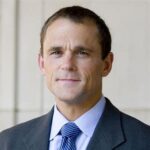
by James A. Bacon
The University of Virginia is freezing undergraduate tuition in the next school year, but increases in student fees, room, and board will total about $392, or about a 1.1% increase in the cost of attendance in the College of Arts & Sciences.
The board had considered boosting tuition as much as 3.1% this year, based on the national cost of providing a college education plus 1%, reports the Daily Progress. While the Board held steady on tuition this year, UVa President Jim Ryan warned, that the respite likely would last only one year.
“If there were ever a year to raise undergraduate tuition, it would be this year, given the large and unexpected costs and the loss of revenues because of COVID,” Ryan said. “At the same time, if there was ever a year to not raise undergraduate tuition, it would also be this year, given the pandemic and the financial hardship facing a lot of our students and their families.”
A tuition freeze represents a tuition cut when inflation is taken into account, Ryan said. “No increase at all is not neutral,” he said. “It is the functional equivalent of cutting tuition, given the impact of inflation.” Over the past six years, UVa has raised tuition 9.7 compared a 9.8% increase in the Consumer Price Index and a 14% increase in the Higher Education Price Index.
Reports the Daily Press:
UVa Rector James B. Murray, Jr. said the past year was rough, noting that 250,000 Virginians lost their jobs, including many students and their families. He also noted UVa’s $44 million in unrecoverable COVID costs.
He said the school also needs to find another $16 million to cover unexpected and unfunded state mandates that raise employee salaries 5% in the next school year. The state provided about 25% of the pay raise for next year but has not earmarked money to sustain the raise, meaning the university will have to fund all of it in the future.
Ryan argued that the tuition freeze puts the University of Virginia at a competitive disadvantage compared to peer institutions. UVa charges about $30,000 less per student than the top 25 private colleges in the country to which UVa compares itself — about $361 million less in tuition each year. “We’re at a competitive disadvantage when you compare our in-state tuition to the tuition of our private peers, not matter how you slice it,” he said.
Bacon’s bottom line: If the goal is to boost UVa’s national ranking as one of the “best colleges” in the United States, Ryan has a point. All elite universities are stuck on an endless treadmill in the race for status, which has driven spending and tuition relentlessly higher. But the added spending, one can argue in economic terms, has diminished marginal utility. In layman’s terms, once you’ve already achieved a certain level of academic excellence, every added dollar of inflation-adjusted spending delivers less bang for the buck.
One also might inquire why UVa, the flagship public university of Virginia, is comparing itself to elite private universities. Shouldn’t UVa be comparing itself to top public universities? One of the top goals of a public university should be to provide an affordable education to the citizens of the state in which it resides.
One more question: Since when did the bench mark for increasing tuition become the Higher Education Price Index — pegging costs to an economic sector notorious for its inability to control costs — plus one percent? Where did that plus-one-percent come from? How is that justified?
If UVa wants to develop a competitive advantage in the national educational marketplace and prestige sweepstakes, perhaps it should try a novel strategy adopted by almost no other institution (possibly excepting the University of Chicago). Position itself as an institution noted for its intellectual diversity, a place where students and faculty from all races, creeds, and walks of life are welcome but where no topics are taboo, all (non-seditious) viewpoints are tolerated, and a vibrant and stimulating exchange of ideas takes place. Create an institution that’s not hostile to the 40% of the country that considers itself conservative… in sum, an institution, gasp, that is true to the ideals of its founder Thomas Jefferson.

Leave a Reply
You must be logged in to post a comment.